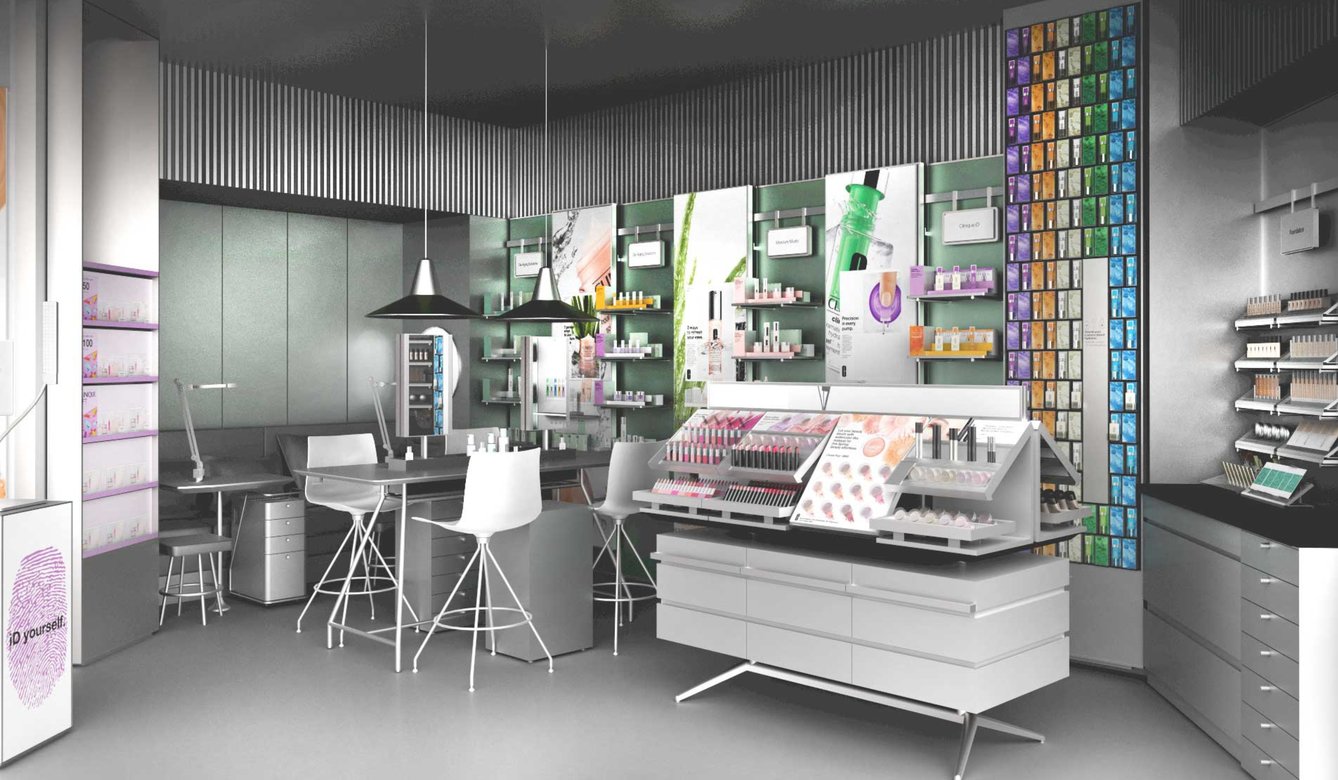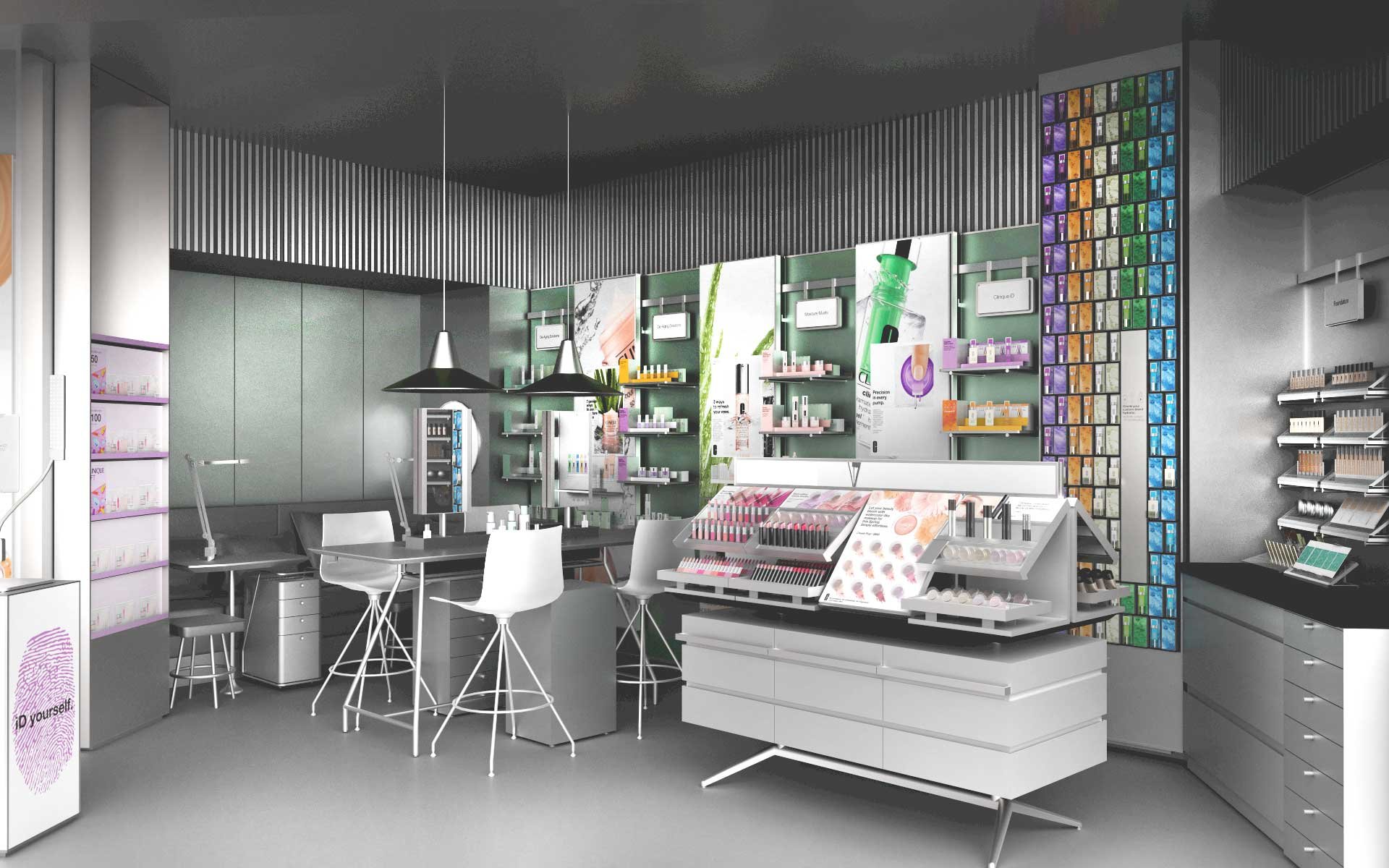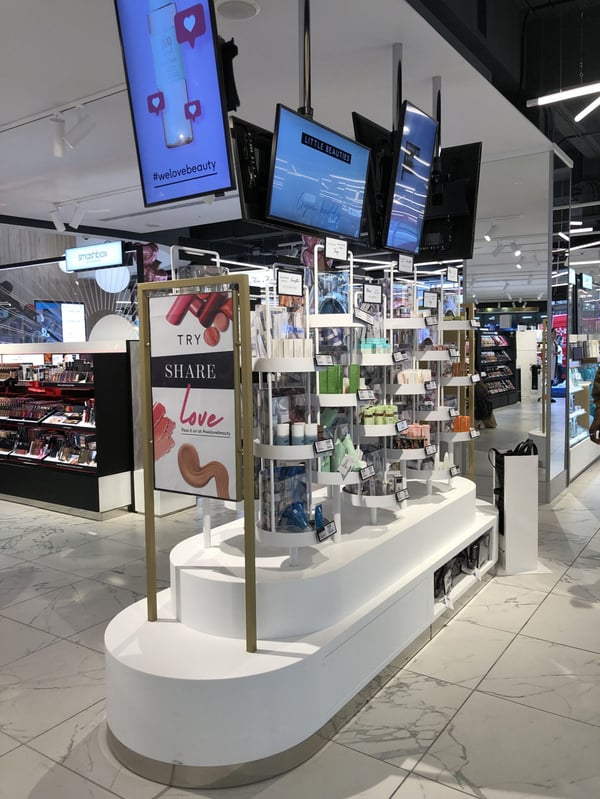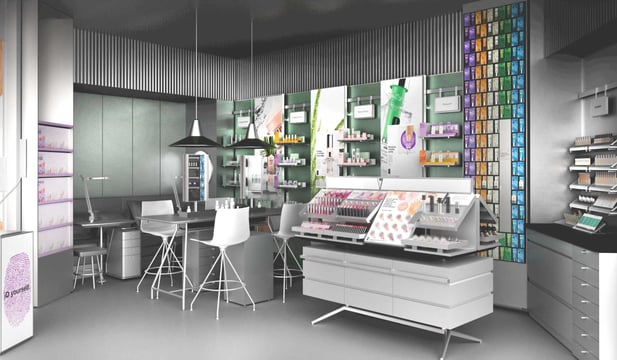How Pharmacy Retail is Looking to the Future

How Pharmacy Retail is Looking to the Future
For a long time, the pharmacy store was a traditional space, all dark wood and glass bottles with white coated employees behind the counter. Whilst many still thrive on those traditions, more are embracing a cleaner, modern way of doing things. Regardless of aesthetic, pharmacies are one of the trickiest retail spaces to implement effective product merchandising and embracing innovation is important to remain at the forefront of this industry.
In most, beauty and pharmaceutical products sit side-by-side, with each individual brand vying for attention, often in very small spaces. These are retail outlets that have to juggle two very different customer journeys, one based on glamour and the other functionality.
BRANDING
Branding has become perhaps the most important sales tool of recent times. Famous faces adorn POS and new product launches are frequent, each fighting for visibility in a crowded market. Beauty halls within department stores have the space to showcase each brand story with elaborate shop-in-shops but that is far from the reality in pharmacy stores.
Branding within pharmaceuticals has a different function. From over-the-counter healthcare to simple medical aids, consumers need these products to be communicated logically and effectively. ‘Trust’ is one of the biggest selling tools for these brands and consumers will seek out those they are loyal to.
But good customer experience isn’t just about being dazzled by fancy fixtures. In an ultra-competitive environment convenience and simplicity are often underutilised. Advances in digital technology means there are retail tools that every part of this business model could benefit from.
PLANOGRAMS
 Planograms are vital in this sector to ensure compliance, there is no room for approximate guidelines when space is so tight. One of the biggest challenges for brands is to control their image but also to be able to compete with their adjacencies. Ultra precise planograms facilitate this by allowing focus on key products whilst ensuring logical segmentation and categorisation. Beauty brands use careful planning to add marketing and enhance visibility. But pharmaceutical products would also do well to enhance the customer experience in less attractive ranges that have long been neglected (samples for items such as compression tights for example).
Planograms are vital in this sector to ensure compliance, there is no room for approximate guidelines when space is so tight. One of the biggest challenges for brands is to control their image but also to be able to compete with their adjacencies. Ultra precise planograms facilitate this by allowing focus on key products whilst ensuring logical segmentation and categorisation. Beauty brands use careful planning to add marketing and enhance visibility. But pharmaceutical products would also do well to enhance the customer experience in less attractive ranges that have long been neglected (samples for items such as compression tights for example).
Planograms also simplify quick, easy product moves to take advantage of seasonality. This practice is key to pharmaceutical environments where the demand for particular items can fluctuate dramatically depending on time of year. Ensuring space is structured to put the right product in front of the customer at the right time is ‘Retail 101’ but many businesses simply don’t have the resources to achieve this.
STREAMLINING COMMUNICATION
Successful executions in these stores rely very much on multiple partnerships and third-party distributors which can be challenging. Many pharmacies are now asking brands for precise planograms but these are simply not effective if stock is missing. More often than not, it is a sales representative who manages the merchandising checks, replenishment and negotiates the allocated space. But this reporting process is at the mercy of timescales and open to human error. Lack of replenishment, broken parts and delayed fixture updates often leave presentations looking unappealing or unshoppable.
Luxury brands are investing in effective POS but they should also invest in communication tools, to be in close and instant connection with retailers and vice versa, ensuring any issues are ironed out quickly. Store staff are rarely on hand to guide customers to alternatives, so from both the retailer and the brands perspective, internal communication tools are essential to prevent lost sales.
Larger retail pharmacies have started investing in Artificial intelligence (AI) tools to improve service, cut costs and optimize stock availability.
AI is reinforcing the stability of supply chains. Pharmaceutical company Merck has partnered with Aera Technology to incorporate AI in decision-making, from demand forecasting to improve product availability, to monitoring storage and transportation environments for maintaining product integrity.
CUSTOMER EXPERIENCE

.jpeg?width=600&height=375&name=C-ACE_DalzielPow_Boots_CoventGarden_07%20(1).jpeg)
Boots Flagship, Covent Garden, Echochamber
Whether it’s a local independent pharmacy or a well-known drugstore, consumers also want an element of service. Local pharmacies have long been corner stones of the community but even now, when we can order prescriptions online, something as important as our health warrants a personal touch.
Independent pharmacies have seen in-store sales increase by 6% to 8%, whereas chain pharmacies have seen them only increase from 3% to 4%, indicating that the personal touch remains important and can be reason enough for a pharmacy customer to shop in-store.
Face-to-face health care comes in various forms and is constantly changing. During the pandemic, pharmacy services were all about vaccinations but that has now given way to wellness trends and travel clinics. Service areas are vital signposts to the retail offer and should be carefully considered in store. Digital technology is key for smooth operations such as click and collect, but can also be utilised as POS that can be updated quickly.
Digital pricing and smart labels can also communicate far more information than a simple price tag, essential in pharmaceuticals where product information is vital. This method of ‘silent service’ will be instinctive to Millennials and Gen Z and will likely be considered standard in the near future. For now, with inflation running at its highest in 40 years, shoppers are looking for deals and promotions. Working in conjunction with planograms, smart labels facilitate these price changes with minimal task time.
CONCLUSION
Streamlining communication makes sense for all partners within this business model (including the customer). Reactive, digital tools will allow pharmacies to work more effectively and be more responsive. Pairing the most modern tools with traditional, personal services that develop trust and loyalty will ensure a flawless customer experience that will command both repeat visits and increased sales.
Pharmacies have proved themselves as vital to our communities and our well-being, now they should capitalise on the need for convenience and quality to boost commercial success through streamlined processes.
Follow IWD on Facebook, LinkedIn, and Instagram or subscribe to our newsletter.





